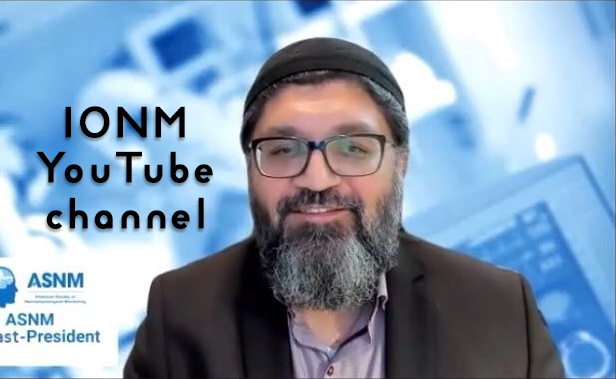The Frequency of Motor Evoked Potential Alerts During Lumbar Spinal Surgeries
DOI:
https://doi.org/10.5281/zenodo.10206767Keywords:
Spine, motor evoked potentials, mep, alert, neuromonitoring, IONMAbstract
Background: Spinal surgery is associated with a high rate of neurological sequelae due to damage to the spinal nerve roots. This study aims to determine the most common alert type during lumbar spinal surgeries, including either anesthetic/physiological, positioning, or surgical.
Methods: We retrospectively reviewed 1,159 extradural spinal surgeries with intraoperative neurophysiological monitoring (IONM) from January 2019 to March 2021 to evaluate the incidence of events. We analyzed the Motor Evoked Potentials (MEP) alerts and changes in the neurophysiological signals. Cases were categorized by procedure type, muscles, and then by the level (upper; or lower) that the MEP alert occurred.
Results: 131 of 1159 (11.3%) surgeries had an intraoperative MEP alert (55% female and 45% males). An MEP alert occurred with a possible risk of post-operative deficit, and 56% of those MEP alerts were due to anesthesia/pharmacological intervention. 50 of the 131 cases had multiple muscle group alerts. Of the five muscle groups we reviewed, quadriceps were most likely to cause an alert. However, the tibialis anterior is most at risk as loss of MEP to this muscle could lead to foot drop. Twenty-seven of the 131 cases had MEP alerts resolved intraoperatively by either repositioning, adjustment in anesthesia, or surgical action. Pre-existing conditions were not considered in this study. The MEP had a greater incidence than somatosensory evoked potentials (SSEP) and electromyography (EMG) in detecting intraoperative and postoperative neurological deficits, especially those involving a single nerve root.
Conclusion: During extradural lumbar procedures, MEPs provide accuracy to be required as a modality as SSEP and s-EMG lack the sensitivity that could lead to false negatives. MEPs allow for prompt, timely investigation, and initiation of intervention by the surgical team to mitigate the possible deficit. Though MEPs could lead to false positive alerts, this can be easily adjusted by correcting alert criteria. Utilization of a multimodal intraoperative neuromonitoring intervention avoided postoperative neurologic deficits in most cases. Our data shows that the overall incidence of MEP is higher in detecting nerve root injuries during lumbar spine surgeries than in SSEP and EMG. We recommend adding the MEP modality to the multimodality IONM protocol for all lumbar surgeries to minimize nerve root injuries and postoperative deficits.
References
Lyon R, Lieberman JA, Feiner J, Burch S. Relative efficacy of transcranial motor evoked potentials, mechanically-elicited electromyography, and evoked EMG to assess nerve root function during sustained retraction in a porcine model. Spine (Phila Pa 1976). 2009 Jul 15;34(16):E558-64. doi: 10.1097/BRS.0b013e3181aa25a8.
LoPresti M A, Athukuri P, Khan A, et al. (March 19, 2023) Thoracolumbar Scoliosis in Pediatric Patients With Loeys-Dietz Syndrome: A Case Series. Cureus 15(3): e36372. doi:10.7759/cureus.36372.
Fehlings, M.G., Brodke, D.S., Norvell, D.C. and Dettori, J.R. (2010). The Evidence for Intraoperative Neurophysiological Monitoring in Spine Surgery. Spine, [online] 35(Supplement), pp.S37–S46. doi:10.1097/brs.0b013e3181d8338e. 4. Toleikis JR; American Society of Neurophysiological Monitoring. Intraoperative monitoring using somatosensory evoked potentials. A position statement by the American Society of Neurophysiological Monitoring. J Clin Monit Comput. 2005 Jun;19(3):241-58. doi: 10.1007/s10877-005-4397-0.
Macdonald DB, Skinner S, Shils J, Yingling C; American Society of Neurophysiological Monitoring. Intraoperative motor evoked potential monitoring - a position statement by the American Society of Neurophysiological Monitoring. Clin Neurophysiol. 2013 Dec;124(12):2291-316. doi: 10.1016/j.clinph.2013.07.025.
Gertsch, J.H., Moreira, J.J., Lee, G.R., Hastings, J.D., Ritzl, E., Eccher, M.A., Cohen, B.A., Shils, J.L., McCaffrey, M.T., Balzer, G.K., Balzer, J.R., Boucharel, W., Guo, L., Hanson, L.L., Hemmer, L.B., Jahangiri, F.R., Mendez Vigil, J.A., Vogel, R.W., Wierzbowski, L.R. and Wilent, W.B. (2018). Practice guidelines for the supervising professional: intraoperative neurophysiological monitoring. Journal of Clinical Monitoring and Computing, [online] 33(2), pp.175–183. doi:10.1007/s10877-018-0201-9.
Isley, M.R., Edmonds, H.L. and Stecker, M. (2009). Guidelines for intraoperative neuromonitoring using raw (analog or digital waveforms) and quantitative electroencephalography: a position statement by the American Society of Neurophysiological Monitoring. Journal of Clinical Monitoring and Computing, 23(6), pp.369–390. doi:10.1007/s10877-009-9191-y. 8. Umair, M., et al. The Incidence Rate of Motor Evoked Potential Alerts in 1159 Lumbar Spinal Surgeries. J Neurol Neurophysiol. 2022, 13(10), 001-003.
Jahangiri FR, Sheryar M, Al Behairy Y. Early detection of pedicle screw-related spinal cord injury by continuous intraoperative neurophysiological monitoring (IONM). Neurodiagn J. 2014 Dec;54(4):323-37. doi: 10.1080/21646821.2014.11106817.
Hicks JM, Singla A, Shen FH, Arlet V. Complications of pedicle screw fixation in scoliosis surgery: a systematic review. Spine (Phila Pa 1976). 2010 May 15;35(11): E465-70. doi: 10.1097/BRS.0b013e3181d1021a.
Jahangiri FR: Surgical Neurophysiology: A Reference Guide to Intraoperative Neurophysiological Monitoring (IONM). Second Edition. Jahangiri FR (ed): CreateSpace Independent Publishing Platform, Charleston, SC, USA; 2012.
Toleikis JR (2013). Intraoperative monitoring using somatosensory evoked potentials. A position statement by the American Society of Neurophysiological Monitoring. Journal of clinical monitoring and computing, [online] 19(3). doi:10.1007/s10877-005-4397-0. 13. Costa P, Faccani G, Sala F, Montalenti E, Giobbe ML, Deletis V. Neurophysiological assessment of the injured spinal cord: an intraoperative approach. Spinal Cord. 2014 Oct;52(10):749-57. doi: 10.1038/sc.2014.138
Jahangiri F R, Al Eissa S, Sayegh S, et al. (August 31, 2016) Vertebral Column Resection for Kyphoscoliosis in a Patient with Ehlers-Danlos Syndrome: An Intraoperative Neurophysiological Monitoring Alert. Cureus 8(8): e759. doi:10.7759/cureus.759.
Wilent WB, Tesdahl EA, Harrop JS, Welch WC, Cannestra AF, Poelstra KA, Epplin-Zapf T, Stivali T, Cohen J, Sestokas AK. Utility of motor evoked potentials to diagnose and reduce lower extremity motor nerve root injuries during 4,386 extradural posterior lumbosacral spine procedures. Spine J. 2020 Feb;20(2):191-198. doi: 10.1016/j.spinee.2019.08.013.
Skinner, S.A., Transfeldt, Ensor E and Savik, K. (2008). Surface Electrodes Are Not Sufficient To Detect Neurotonic Discharges: Observations In A Porcine Model And Clinical Review Of Deltoid Electromyographic Monitoring Using Multiple Electrodes. Journal of Clinical Monitoring and Computing, [online] 22(2), pp.131–139. doi:10.1007/s10877-008-9114-3.
Downloads
Published
How to Cite
Issue
Section
License
Copyright (c) 2023 J of Neurophysiological Monitoring

This work is licensed under a Creative Commons Attribution 4.0 International License.





